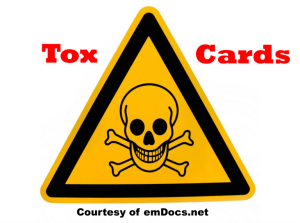Authors: Allysia Guy, MD; Anthony Scoccimarro, MD; Muhammad Waseem, MD, MS (Lincoln Medical & Mental Health Center Bronx New York) // Edited by: Alex Koyfman, MD (EM Attending Physician, UT Southwestern Medical Center / Parkland Memorial Hospital, @EMHighAK) and Brit Long, MD (EM Chief Resident at SAUSHEC, USAF, @long_brit)
Overview
Traumatic injuries may be occult or “not apparent on initial ED evaluation” and can result in significant increase in morbidity and mortality. There are certain populations, such as children, alcoholics, and the elderly who are at increased risk for these injuries.
Occult Abdominal Injuries
Occult abdominal injury should be considered in the following cases:
–Unexplained anemia
–Elderly population: falls are the leading cause of injury and death
–Altered mental status
-Patients on anticoagulant: a trivial mechanism of trauma can result in serious consequences
–Substance abuse
In up to 9% of patients, injury may be missed by primary and secondary survey [i]
Hollow viscus injuries
These injuries particularly remain occult because one of the following:
-Focused FAST examination may not detect these injuries
-Hematocrit may not fall
Diaphragmatic injury
-Difficult to diagnose and may remain occult for weeks to months
-Rate: 1%-5% of MVA hospitalized patients and 10% -15% with penetrating trauma to the lower chest [ii],[iii]
-Rate of missed diaphragmatic injury or rupture in trauma patients is between 12% and 60% [iv],[v]
-Gold standard is laparoscopy
Retroperitoneal hematoma
-Potential spaces which may conceal a large amount of blood with minimal or delayed clinical manifestations
-Increased risk in patients who are taking anticoagulant medications
-Presentation may include unexplained hypotension, falling hemoglobin or hematocrit, or unexplained anemia
-Flank ecchymosis (Grey-Turner sign) or periumbilical ecchymosis (Cullen sign)
-Diagnostic test: CT scan
-FAST examination may not detect this space
Musculoskeletal injuries
Fractures and injuries that are most commonly missed:
Posterior shoulder dislocation
-Rare injury and occurs in only 1% to 4% of all shoulder dislocations
-Pitfall: over-reliance on a single AP view of the shoulder
-Should obtain an axillary view in order not to miss this diagnosis
Hip fracture
-Classic presentation: relatively minor trauma in an elderly patient
-Pitfall: initial radiograph may be negative if the fracture is impacted, nondisplaced, or there is the presence of underlying osteoporosis
-Consider MRI if negative initial radiograph but patient will not bear weight
-Miss rates for hip fractures 2% to 9% [vi]
Head injury
Risk factors:
–Chronic alcoholism: cerebral atrophy by increasing tension on the cerebral bridging veins
–Elderly population
–Anticoagulant use: 6 to 11-fold increase in ICH [vii]
Cervical injury
-Missed cervical spine injury (5.8%) [viii]
-Normal plain radiographs cannot exclude cervical injury [ix] and up to 60% of cervical pathology may be missed (most commonly C1-2 and C7-T1 injuries)
–CT is the gold standard
–Increased rates of ligamentous disruption in children, secondary to increased ligamentous laxity and caput/body ratio
-Up to 38% of pediatric patients admitted to level 1 trauma centers may have spinal cord injuries without radiological abnormalities (SCIWORA) [x]
-Consider MRI to evaluate for ligamentous injury in children
Extremity injuries
-Ultrasound (US) may be useful in initial evaluation, but may miss up to 67% of vascular injuries [xi]
-Serial ankle-brachial indices (ABI) are indicated for anyone with multilevel extremity injury
–CT angiogram for anyone with high clinical suspicion for vascular injury and concerning ABI
-Obtain early consultation with orthopedic and vascular surgery
Lung injuries
-Occult pneumothoraces (not visible on plain radiography) occur in up to 75% of trauma patients [xii]
-Erect radiography has a greater sensitivity than supine A/P, but may not be feasible
-US has a sensitivity between 92-100% for pneumothorax; but is operator dependent and not yet standardized in ATLS protocols
-US may have a role in diagnosing rib fractures
-Patients with rib fractures are at a high risk of pneumonia, up to 30% [xiii],[xiv]
Vascular Injury
-Vertebral artery injuries (VAI) are often missed
-Risk factors for VAI [xv]:
-Cervical spine fracture -Ischemic stroke
-Le Fort II or III fracture -Head injury with GCS < 6
-Cervical hematoma -Hanging injury
-Horner syndrome -Post-traumatic cervical bruit
-Only 20% of patients present with symptoms due to posterior collateral circulation
-CTA is the gold standard for diagnosis
Child Abuse
-There are high rates of occult fractures among abused children: up to 68% in children < 2 years and up to 84% in children < 1 year [xvi]
-American Academy of Pediatrics recommends a full skeletal survey under 2 years if there is suspicion [xvi]
-CT of the abdomen is recommended with high suspicion of abuse with abdominal tenderness
-Consider evaluating liver function tests and lipase to evaluate for occult abdominal injuries
Bottom line
–Serial examination and contrast CT are best for the diagnosis of intra-abdominal and pelvic injuries in a stable patient
–US is very sensitive for occult pneumothoraces
-Anyone with spinal fractures and head trauma should raise suspicion for VAI
–Elderly, alcoholics and children have the greatest risk for occult injury
-Abused children should be further evaluated
References / Further Reading
[i] Enderson BL, Reath DB, Meadors J, Dallas W, DeBoo JM, Maull KI. The tertiary trauma survey: a prospective study of missed injury. J Trauma 1990;30(6):666-669
[ii] Voeller GR, Reisser JR, Fabian TC, Kudsk K, Mangiante EC. Blunt diaphragm injuries: a five year experience. Am Surg 1990;56(1):28-31
[iii] Brandt ML, Luks FI, Spigland NA, DiLorenzo M, Laberge JM, Ouimet A. Diaphragmatic injury in children. J Trauma 1992;32(3):298-301
[iv] Reber PU, Schmeid B, Seiler CA, Baer HU, Patel AG, Buchler MW. Missed diaphragmatic injuries and their long-term sequelae. J Trauma 1998;44(1):183-188
[v] Abdel Hadi MS, Al-Mulhim AA, Al-Awad NI, Zakaria HM, Al-Awami MS. Diaphragmatic injury. A clinical review. Saudi Med J 2001;22(10):890-894
[vi] Rizzo PF, Gould ES, Lyden IP, Asnis SE. Diagnosis of occult fractures about the hip. Magnetic resonance imaging compared with bone scanning. J Bone Joint Surg Am 1993;75(3):395–401.
[vii] Gebel JM. Intracerebral hemorrhage. Neurol Clin 2000;18(2):419-438
[viii] Hoffman JR, Mower WR, Wolfson AB, Todd KH, Zucker MI. Validity of a set of clinical criteria to rule out injury to the cervical spine in patients with blunt trauma. National Emergency X-Radiograph Utilization Study Group. N Engl J Med 2000;347(2):94-99
[ix] Davis JW, Phreaner DL, Hoyt DB. The etiology of missed cervical spine injuries. J Trauma 1993;34:342-346
[x] Desouza RM, Crocker MJ, Haliasos N, Rennie A, Saxena A. Blunt traumatic vertebral artery injury: a clinical review. Eur Spine J. 2011 Sep;20(9):1405-1416
[xi] Yan H, Zhao B, Kolkin J, Li Z, Chen X, Chu T, Gao W. The management of lower extremity multilevel arterial injuries: a 10-year experience. PLoS One. 2015 Mar 20;10(3):e0121769
[xii] Ball CG, Kirkpatrick AW, Feliciano DV. The occult pneumothorax: what have we learned? Can J Surg. 2009 Oct;52(5):E173-179
[xiii] Daffner RH. Controversies in cervical spine imaging in trauma patients. Emerg Radiol. 2004 Aug;11(1):2-8
[xiv] McGillicuddy D, Rosen P. Diagnostic dilemmas and current controversies in blunt chest trauma. Emerg Med Clin North Am. 2007 Aug;25(3):695-711
[xv] Desouza RM, Crocker MJ, Haliasos N, Rennie A, Saxena A. Blunt traumatic vertebral artery injury: a clinical review. Eur Spine J. 2011 Sep;20(9):1405-16
[xvi] Section on Radiology; American Academy of Pediatrics. Diagnostic imaging of child abuse. Pediatrics. 2009 May;123(5):1430-1435









1 thought on “Occult Trauma: The Eyes Do Not See What the Mind Does Not Know”
Pingback: Скрытая травма: глаза не видят то, что не знает разум — Девятый вызов | The 9th Call |